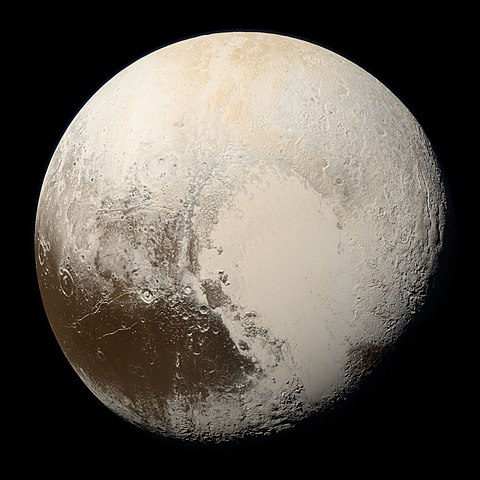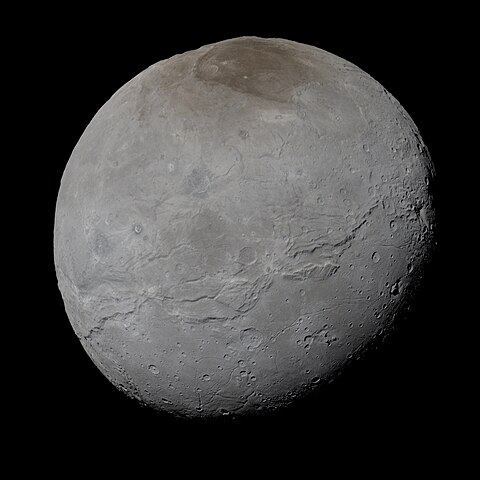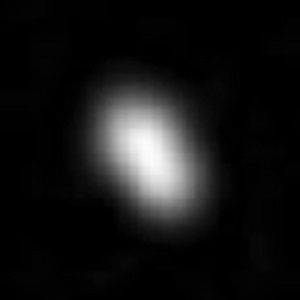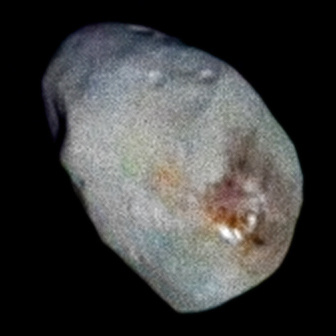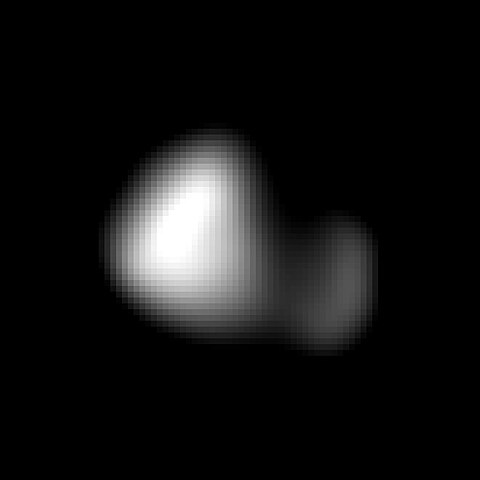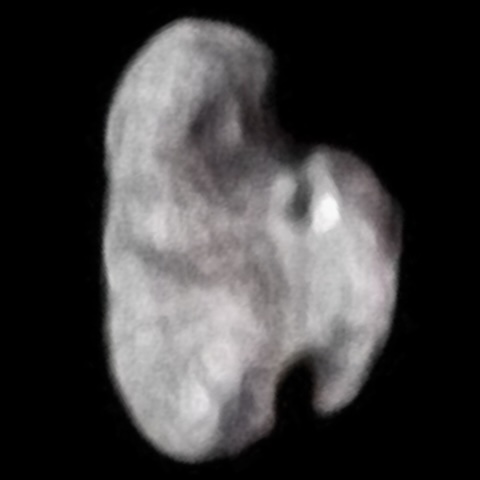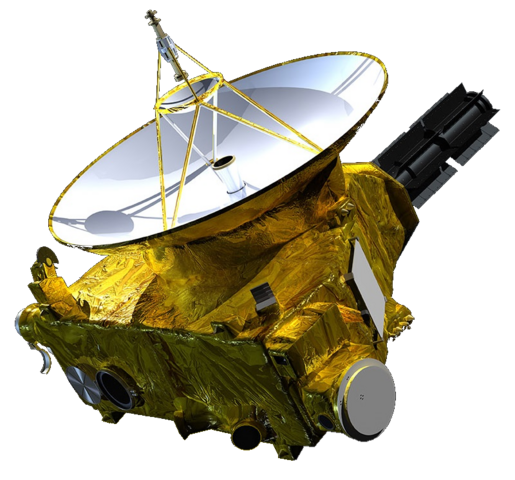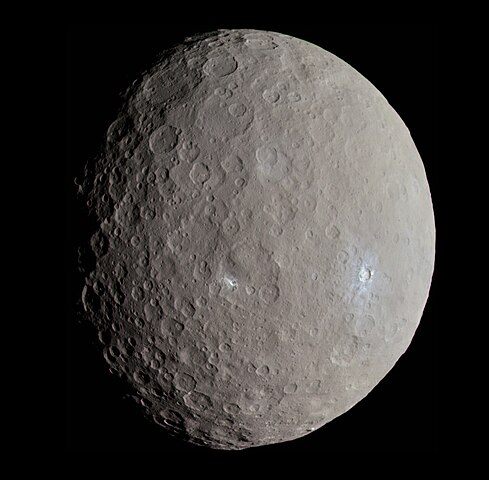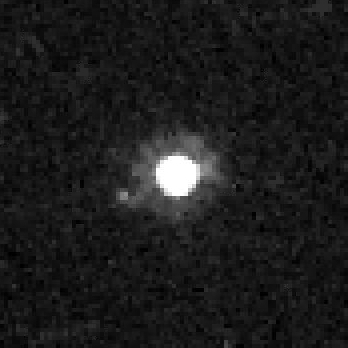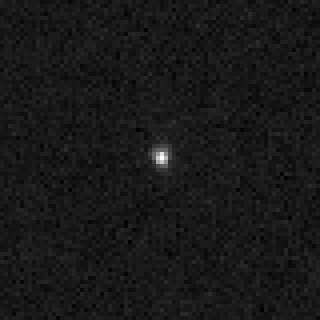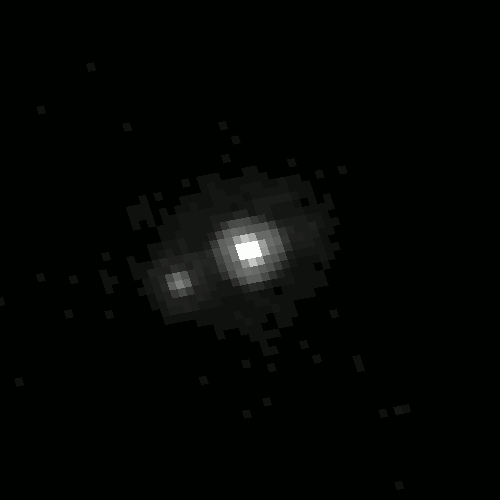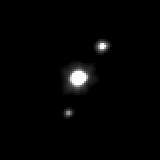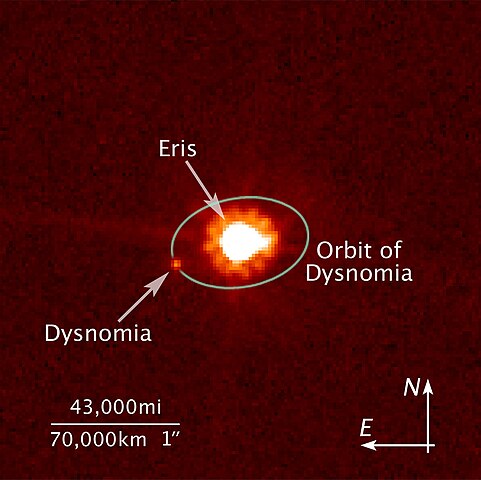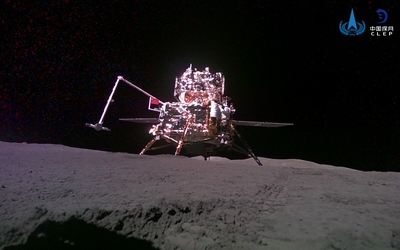1 day / second
0.5 AU
134340 Pluto
Dwarf Planet
A frigid dwarf planet orbiting in the distant Kuiper Belt, characterized by its reddish-brown coloring, prominent heart-shaped plain, thin nitrogen atmosphere, and five moons including its largest companion Charon.
Key Facts
orbital regime | Kuiper Belt |
learn more | Wikipedia |
mass | 1.3025e+22 kg |
radius | 1,188.3 km |
hill radius | 0.038 AU |
semi-major axis | 39.482 AU |
eccentricity | 0.249 |
inclination | 17.16º |
longitude of the ascending node | 110.299º |
argument of periapsis | 113.834º |
orbital period | 248.084 years |
sidereal rotation period | 6.387 days |
axial tilt | 122.53º |
surface gravity | 0.063 g |
class | plutino |
discovery date | February 18, 1930 |
discovered by | Clyde Tombaugh at Lowell Observatory |
name origins | Named after Pluto, the Roman god of the underworld. Name suggested by Venetia Burney |
albedo | 0.58 |
material composition | Rocky core with icy mantle and surface |
density | 1.85 g/cm³ |
Major Moons
Charon
A large moon half the diameter of Pluto that is tidally locked with its parent body, forming a binary system where both objects perpetually show the same face to each other as they orbit.
Styx
A tiny irregular moon, roughly 5-7 kilometers in diameter, discovered in 2012 orbiting in the same plane as Pluto's other small satellites.
Nix
A tiny, oblong moon discovered in 2005 that irregularly tumbles as it orbits Pluto in a chaotic pattern due to the competing gravitational effects of Pluto and its largest moon Charon.
Kerberos
A tiny, irregularly shaped moon of Pluto discovered in 2011, estimated to be only about 12 kilometers across and orbiting between Nix and Hydra at a distance of about 58,000 kilometers from Pluto.
Hydra
A tiny, irregularly shaped moon in a chaotic orbit around Pluto, discovered in 2005 as part of the same survey that found Nix and subsequently named after the nine-headed serpent from Greek mythology.
Spacecraft Visits
New Horizons
Flyby
Launched in 2006, visited in 2015
After a 9.5-year journey spanning 3 billion miles, New Horizons made its historic flyby of Pluto on July 14, 2015, capturing detailed images of the dwarf planet's heart-shaped plains, icy mountains, and atmospheric haze during its closest approach of 7,800 miles.
